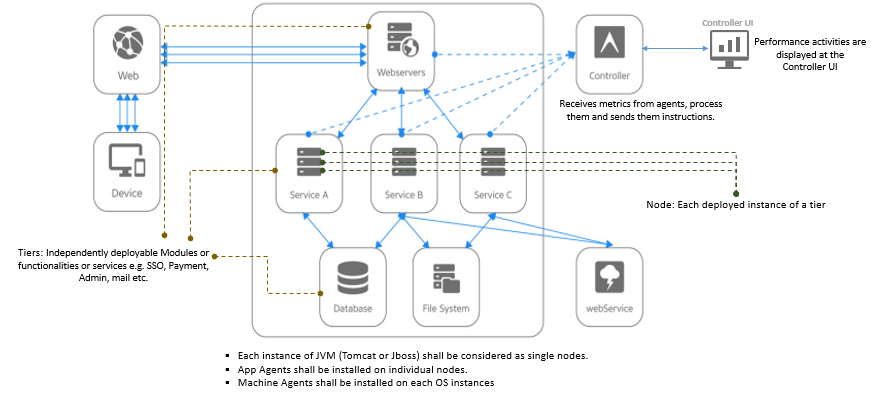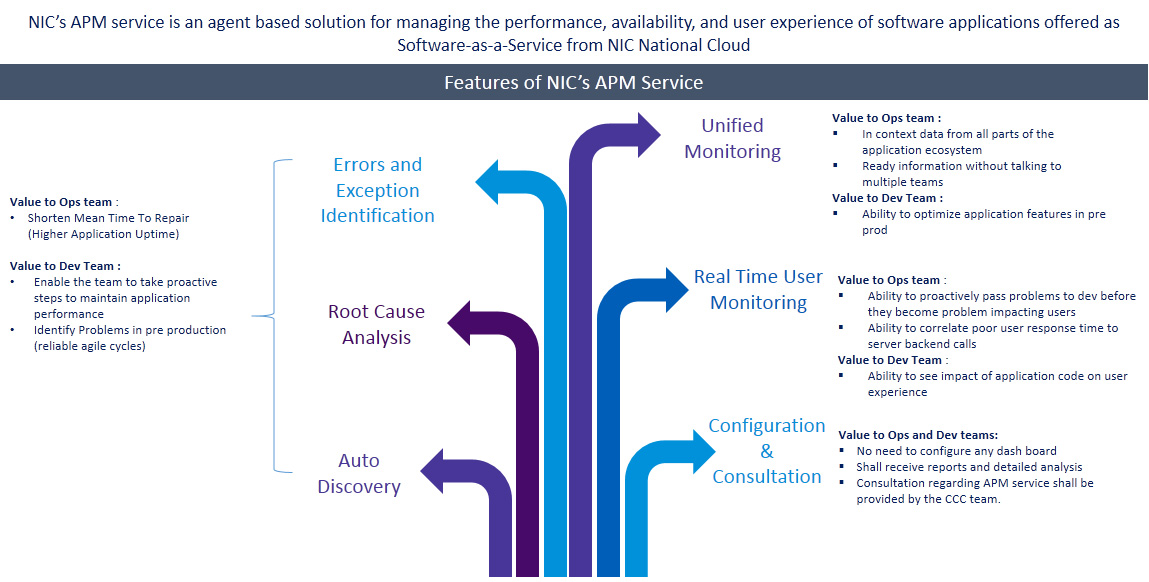इलेक्ट्रॉनिकी और सूचना प्रौद्योगिकी मंत्रालय, भारत सरकार
MINISTRY OF
ELECTRONICS AND INFORMATION TECHNOLOGY, GOVERNMENT OF INDIA
इलेक्ट्रॉनिकी और सूचना प्रौद्योगिकी मंत्रालय, भारत सरकार
MINISTRY OF
ELECTRONICS AND INFORMATION TECHNOLOGY, GOVERNMENT OF INDIA
The performance of a web-based application depends not only on the application server itself but also on various components and interfaces in the application delivery ecosystem. Bottlenecks, which can occur at one or more nodes of the application delivery ecosystem (e.g., the end user device through which users can access the application, the network that connects the application servers with user interfaces, the backend databases, and so on), have an adverse impact on application performance. Application Performance Management (APM) service helps users monitor, detect, and diagnose complex application performance problems to maintain an expected level of service.
NIC’s APM service is an agent-based solution for managing the performance, availability, and user experience of applications and is offered as Software-as-a-Service from NIC National Cloud. The service is based on a client-server model where monitoring agents shall be installed on the various components of the application delivery ecosystem (that need to be monitored) to collect performance data. The data shall be sent to the APM server (which is managed by the NIC APM team), which shall analyse the collected data and present actionable insights through a dashboard with drill-down capabilities.
APM Service Deployment Architecture

The APM measures application performance by using these two sets of metrics. While the first set of performance metrics defines the performance experienced by end users of the application, the second set of performance metrics measures the computational resources used by the application for the load (volume of transactions processed by the application, e.g., transactions per second (TPS), requests per second, pages per second), indicating whether there is adequate capacity to support the load, as well as possible locations of a performance bottleneck. The measurement of these quantities establishes an empirical performance baseline for the application. The baseline can then be used to detect changes in performance. Changes in performance can be correlated with external events and subsequently used to predict future changes in application performance.

Registered Cloud users may Click here and submit their Service Request (SR) to avail the above service, whereas new users ( i.e., users not yet registered for cloud ) are requested to first apply for the Cloud Registration with reference to the On-boarding procedure.
Please describe the problem you are trying to solve. The experts at NIC Cloud will help you find the right solution.